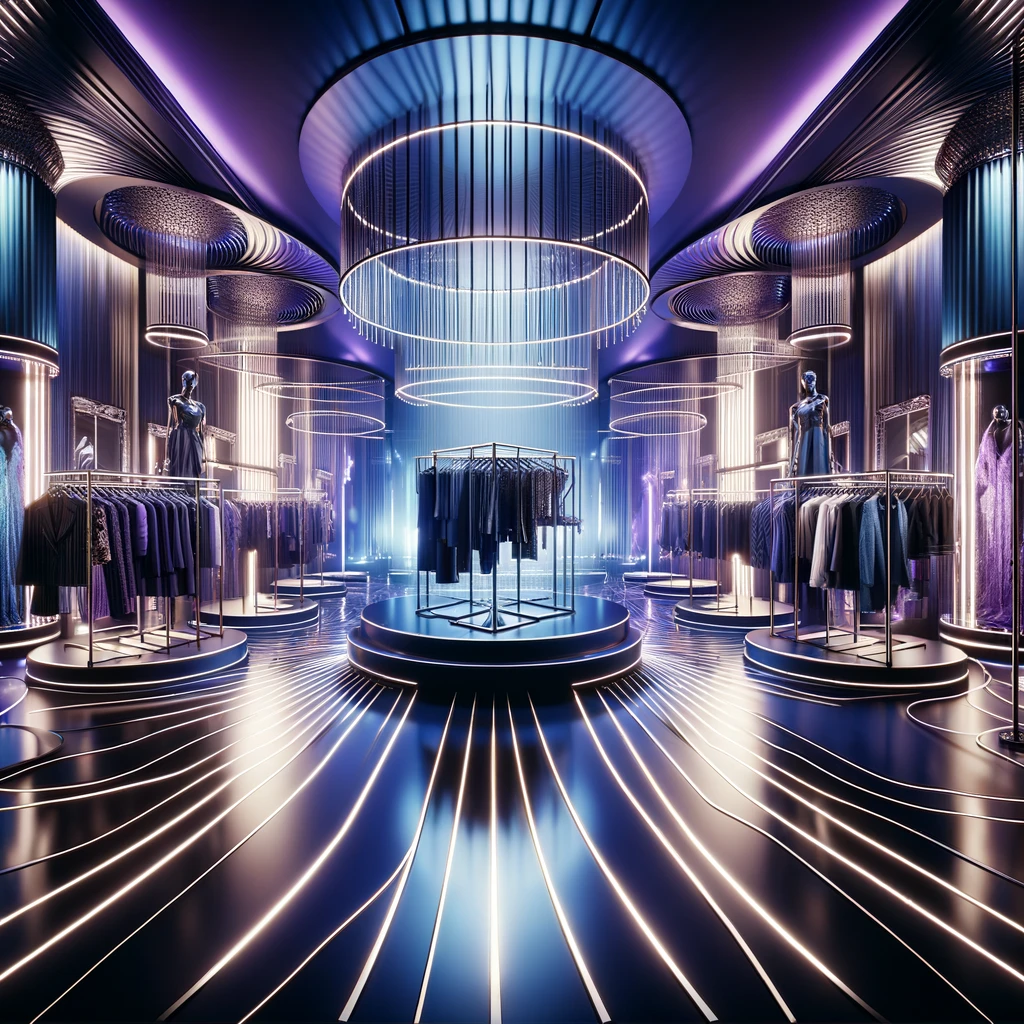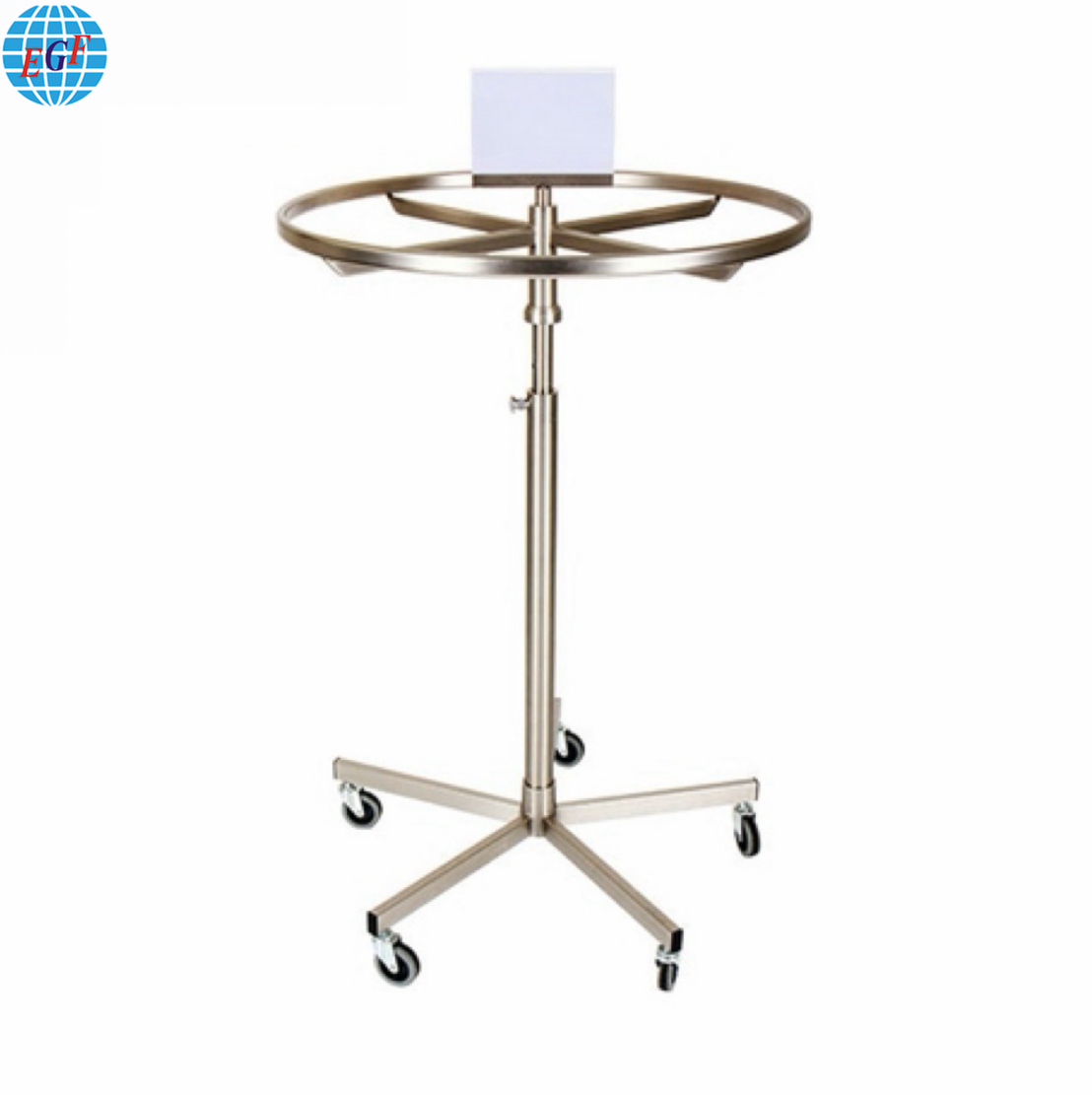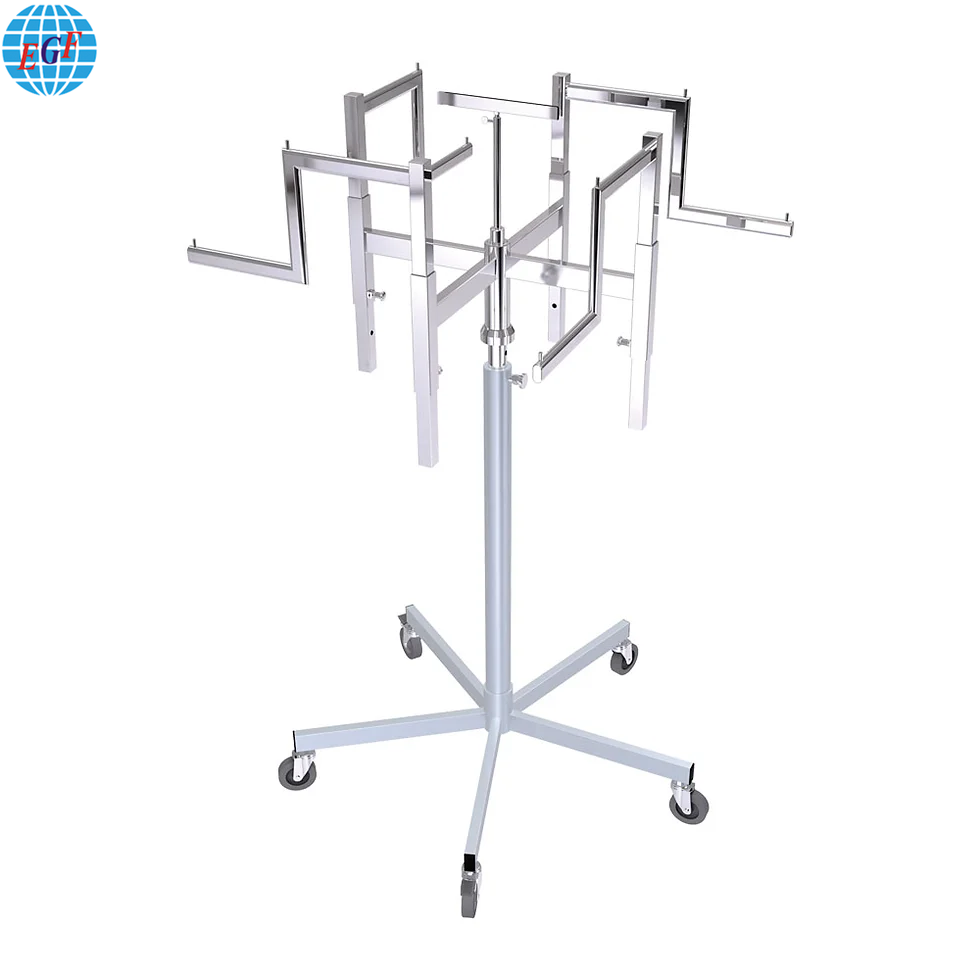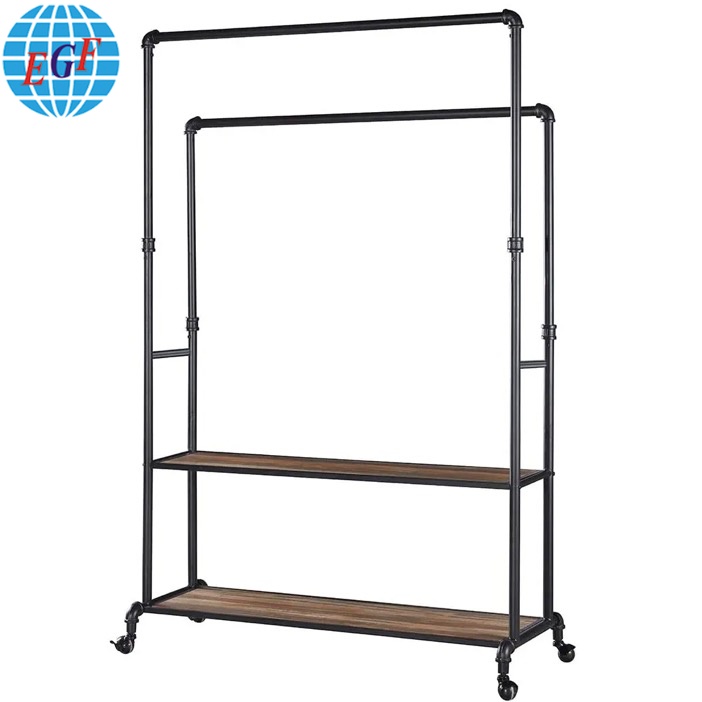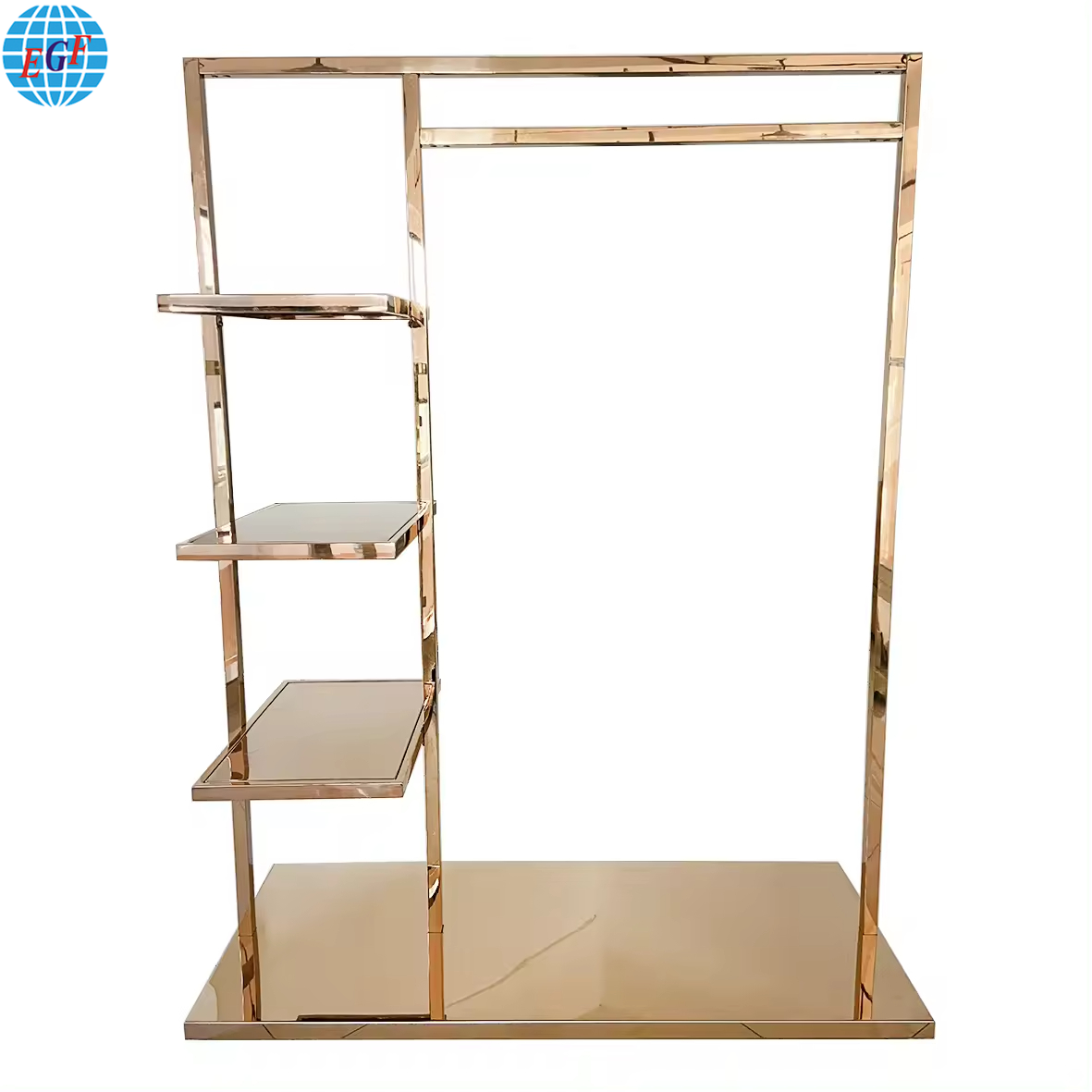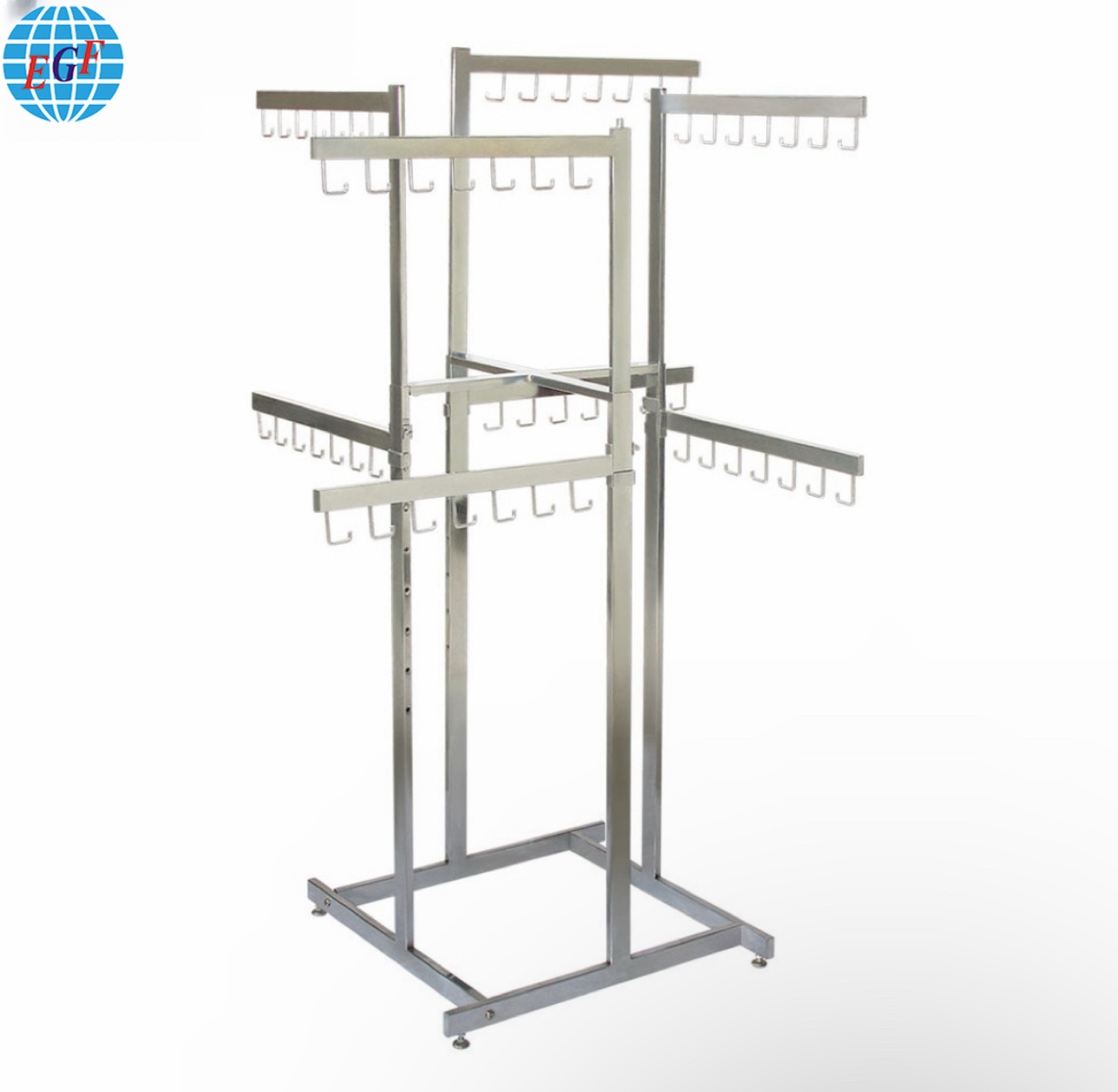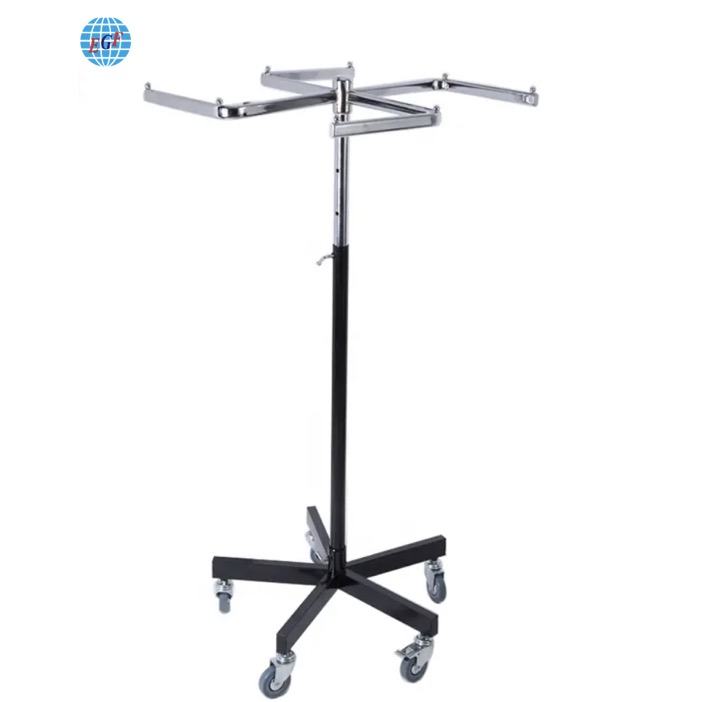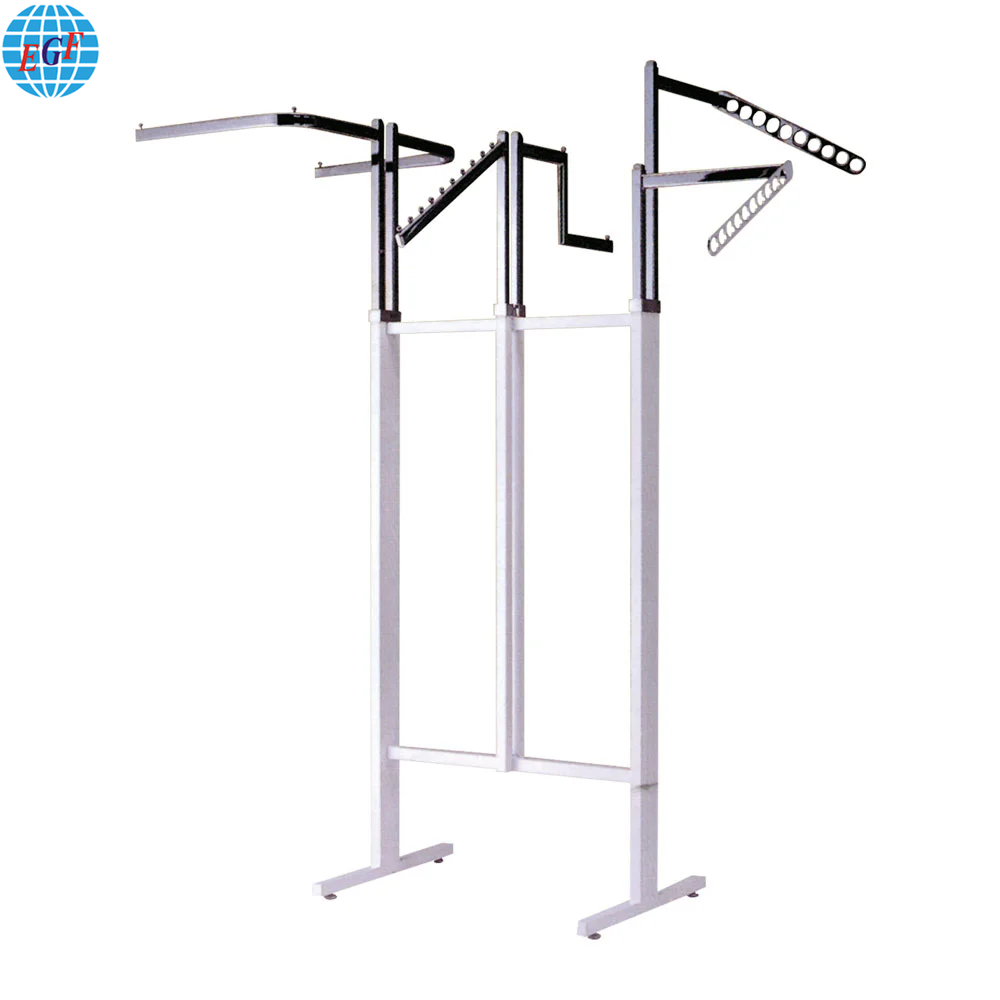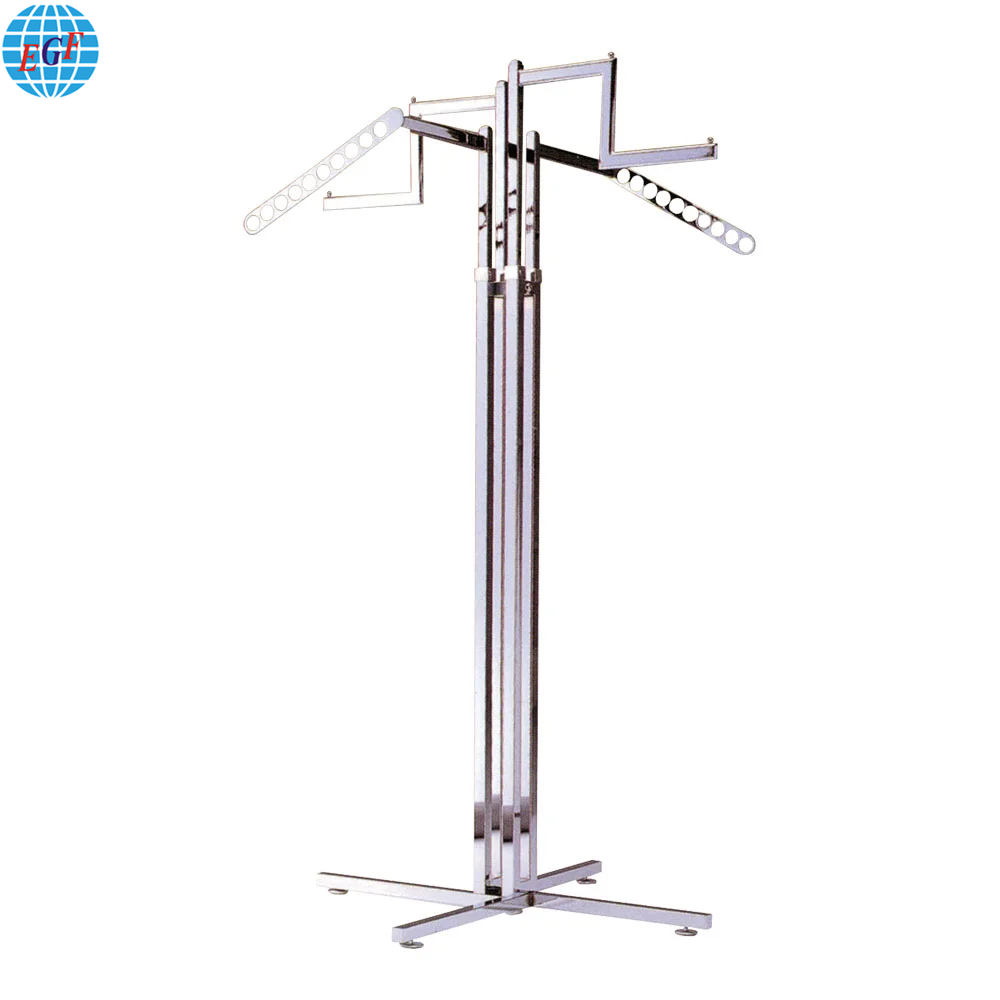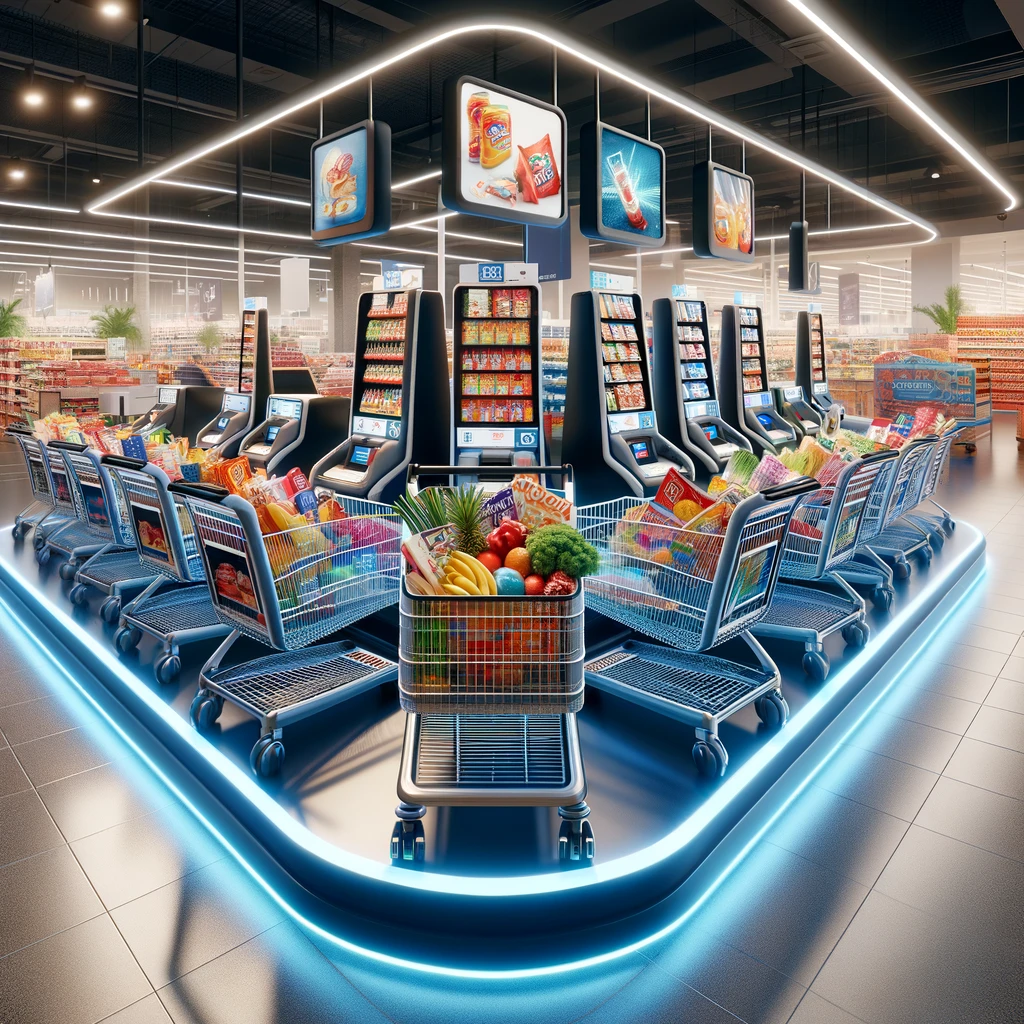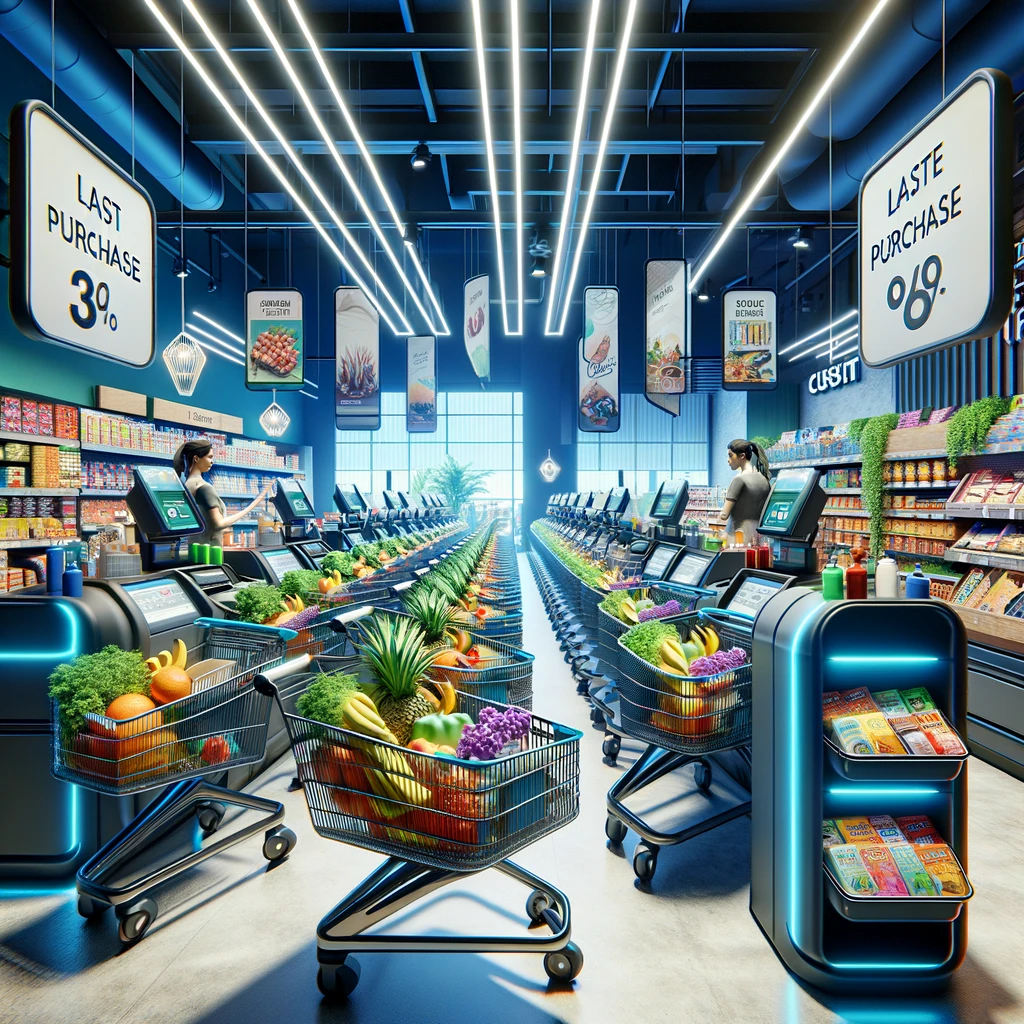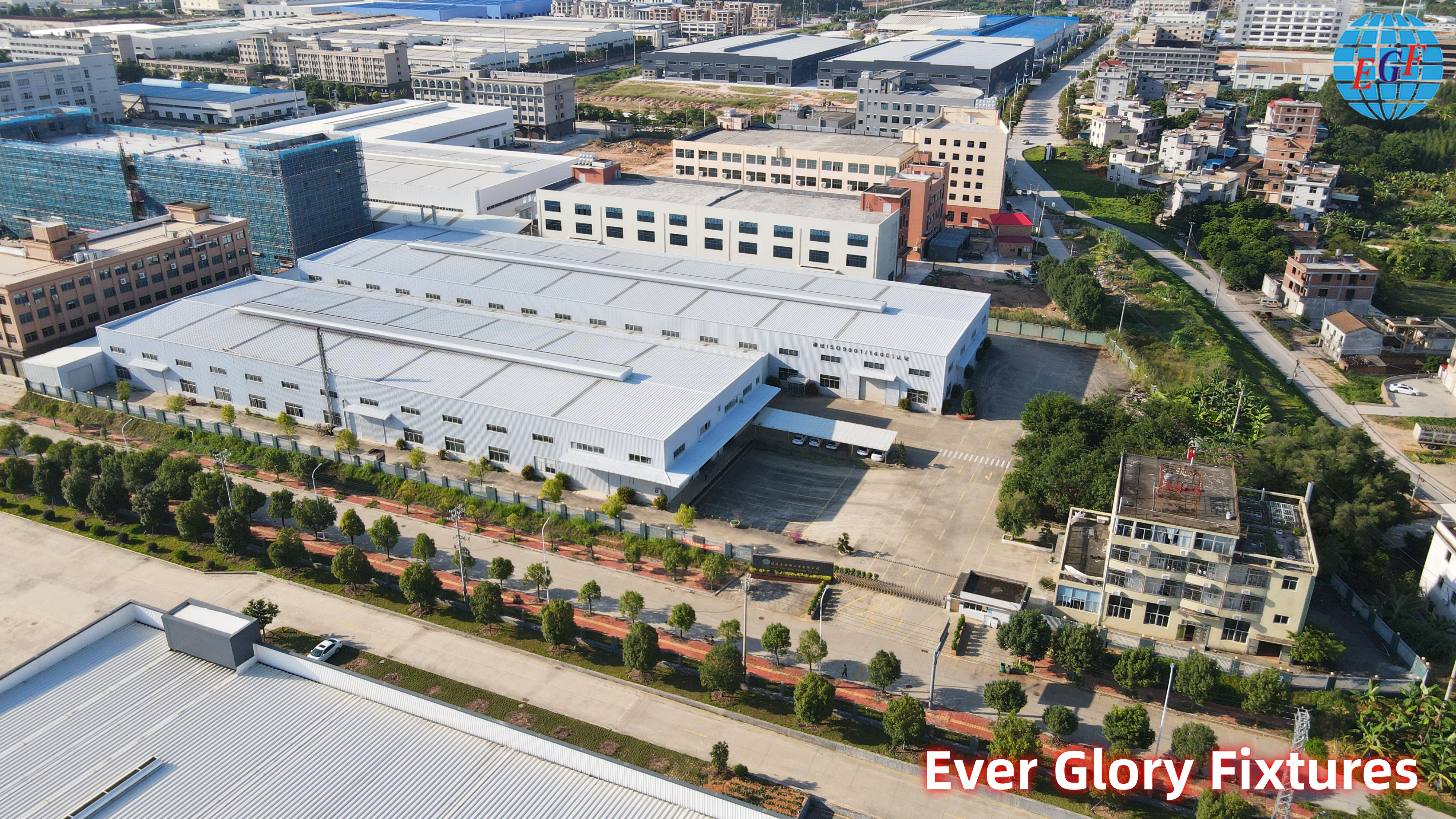Ready to get started on your next store display project?
Introduction:
In today’s retail market, a successful clothing store is not just about selling products—it's about creating an immersive shopping experience. Metal garment racks play a critical role in showcasing apparel in a way that is both appealing and functional. This article delves into how to choose the perfect metal racks for your retail store, focusing on customization options, style variations, and effective use of these fixtures to enhance customer experience and maximize sales.
Understanding the Basics of Metal Garment Racks
Metal garment racks are essential tools for retail stores, offering a variety of styles and functionalities tailored to different retail environments and fashion types. Each design brings unique benefits, catering to specific display needs and helping optimize space utilization while enhancing the visual appeal of merchandise. Here's a more detailed look at the primary types of metal garment racks:
Single-Rail Racks
These racks are characterized by their singular horizontal bar, making them ideal for minimalist displays or spaces with limited area. The simplicity of single-rail racks serves to direct the customer’s attention straight to the hanging garments, reducing visual clutter and highlighting the individual pieces. They are especially effective in boutiques where each item is selected to stand out on its own merit.
Double-Rail Racks
Double-rail racks feature two parallel bars, offering double the hanging capacity of single-rail racks. This makes them particularly well-suited for larger stores that manage a more extensive inventory. The additional space allows for organized displays of multiple garment styles, facilitating an easy browsing experience. These racks can be used to separate clothing by style, season, or even color, making them versatile tools for inventory management and display.
Circular Racks
Circular racks are designed to encircle clothing items around a central point, providing 360-degree access. This arrangement is perfect for showcasing accessories, smaller clothing items, or featured promotions. The circular design not only maximizes floor space but also invites customers to walk around the display, increasing interaction with the products from all angles. This type of rack is commonly found in central areas of the store, acting as a focal point to attract customer interest.
Adjustable Racks
Adjustable racks offer the utmost in flexibility, with mechanisms to alter both the height and the width of the rack. This adaptability is crucial for stores that stock a diverse range of clothing sizes and styles, from children's apparel to adult fashions. Adjustable racks can accommodate everything from long coats to cropped tops with a simple adjustment, ensuring that all garments are displayed in the most flattering and accessible manner.
Each of these rack types can be further customized in terms of material, finish, and additional features like wheels for mobility, or integrated signage holders for promotional messaging. By selecting the appropriate type and customization of metal garment racks, retailers can enhance both the functionality and aesthetics of their store environments, ultimately leading to a better shopping experience and increased sales.
Choosing the Right Material and Design
When selecting metal garment racks for your retail store, the choice of material and design is paramount not only for durability but also for complementing your store’s aesthetic. Here's a more detailed and professional exploration of how to choose the right materials and designs for your garment racks:
Material Quality
The material from which a garment rack is constructed plays a critical role in both its functionality and its contribution to the store’s ambiance. Popular choices include:
1. Stainless Steel: Known for its strength and resistance to corrosion, stainless steel racks offer longevity and maintain a shiny, high-end look that can elevate the store's design. They are particularly suitable for stores with heavy garments or high traffic, as they can withstand considerable wear and tear.
2. Aluminum: This material is lighter than stainless steel and still very durable. Aluminum racks are easier to move and reconfigure, making them ideal for dynamic retail spaces that frequently change their layout. The sleek, modern appearance of aluminum fits well with contemporary store designs.
3. Chrome-Plated Metal: For retailers looking for a cost-effective option that doesn’t compromise on style, chrome-plated racks are an attractive alternative. While not as robust as stainless steel, they offer a polished look that mirrors the appeal of more expensive materials.
Design Compatibility
Choosing a rack design that harmonizes with your store's interior design is essential for creating a cohesive shopping environment. Consider the following styles:
1. Industrial Design: Garment racks with a raw, industrial look—featuring exposed welds or a matte finish—complement modern, urban retail spaces or those aiming for a minimalist aesthetic. These racks often incorporate elements like bare metal tubes and can include integrated wheels for practical mobility.
2. Ornate Designs: For boutiques or specialized stores aiming for a more intimate, personalized shopping experience, ornate racks with intricate designs can add a touch of elegance. These might feature scrolled details, gold or brass finishes, or vintage-inspired elements that reflect sophistication and uniqueness.
3. Modular Systems: These are increasingly popular in flexible retail environments. Modular racks can be easily adjusted or expanded with add-ons like extra hanging bars, shelves, or accessory holders, allowing for a customizable layout that can evolve with your merchandise and seasonal displays.
Integrating Function with Style
Ultimately, the choice of material and design should not only reflect the visual identity of your brand but also cater to the practical demands of your retail operation. Ensure that your garment racks are robust enough to handle your inventory while enhancing the overall shopping experience through their aesthetic contribution to your store’s environment.
By thoughtfully selecting the material and design of your garment racks, you can create a functional and inviting display area that effectively showcases your merchandise and reinforces your brand’s visual identity.
Customization and Branding
Customizing garment racks is a strategic move that can significantly enhance the shopping experience while reinforcing your brand identity. Here’s a deeper dive into the key aspects of customization and branding of metal garment racks, highlighting how these elements can be tailored to meet specific retail needs:
Branding Elements
Integrating branding elements into your garment racks is an effective way to maintain a consistent brand image throughout the store. This can be achieved through:
1. Logos and Brand Marks: Incorporating your logo or brand marks directly on the racks can serve as a constant visual reminder of your brand. This can be done through metal cutouts, embossed details, or attached plaques that reflect your brand’s logo.
2. Custom Colors and Finishes: Selecting custom colors that match your brand’s palette or choosing finishes that reflect your brand’s aesthetic can make the racks an integral part of your visual merchandising strategy. For example, a luxury brand might opt for brushed gold or matte black finishes to convey a sense of exclusivity.
Adjustable Components
Flexibility in display fixtures is crucial for accommodating changing inventory and seasonal trends. Adjustable components on garment racks can include:
1. Telescoping Bars: These allow the height of the racks to be adjusted to fit different garment lengths, which is particularly useful for stores that carry a varied product line from children’s wear to adult apparel.
2. Expandable Widths: Racks with expandable widths can adapt to different space needs or inventory sizes, making them ideal for retail spaces that must maximize their display capabilities within varying floor layouts.
3. Modular Attachments: Offering the ability to add or remove shelves, hooks, or additional hanging bars can help customize the display to current stock levels or promotional displays.
Integrated Features
Enhancing racks with integrated features can improve functionality and overall shopping experience by making merchandise more accessible and appealing:
1. Built-in Mirrors: Allowing customers to quickly try on accessories or visualize outfits on the spot can enhance customer satisfaction and potentially increase sales.
2. Shelving Units: Integrated shelves provide a place for folded merchandise or complementary items, such as accessories and footwear, creating a comprehensive shopping experience in one station.
3. Lighting Solutions: Incorporating lighting into garment racks can highlight specific products and create ambience. LED strips or spotlighting can draw attention to new arrivals or premium collections.
Customizing your garment racks not only strengthens your brand presence but also increases the functional utility of your retail space. By considering these detailed elements of customization, retailers can create a tailored shopping environment that resonates with their brand ethos and meets consumer needs effectively.
Maximizing Space and Enhancing Display
Strategically positioning garment racks within a retail store is essential for maximizing floor space and enhancing product displays. Thoughtful placement can not only improve customer flow and increase comfort but also significantly boost sales by drawing attention to key items. Here are detailed strategies for optimizing the arrangement of your metal garment racks:
Creating Hotspots
Hotspots are areas within a store designed to attract customer attention and encourage interaction with featured products. These are effectively used to showcase new arrivals, seasonal collections, or high-margin items. Here’s how to create effective hotspots:
1. Location Choice: Place hotspots in high-traffic areas such as near the entrance, along the main aisle, or adjacent to the checkout area where customers are most likely to pass through.
2. Design Focal Points: Use unique or particularly eye-catching racks for these areas to distinguish them from the rest of the merchandise. This could involve distinct colors, lighting features, or signage that stands out.
3. Product Grouping: Display complementary items together to encourage multiple purchases. For example, placing hats, scarves, and gloves near winter coats during the colder seasons.
Maintaining Proper Spacing
The layout of racks should facilitate an intuitive and comfortable shopping experience. Proper spacing is crucial to avoid a cluttered appearance and ensure that customers can move freely throughout the store:
1. Customer Navigation: Ensure there is enough space between racks for at least two people to pass comfortably. This is typically about 30 inches (approximately 76 cm) but may vary depending on your specific customer base and store size.
2. Visual Clarity: Spacing racks properly helps in maintaining a tidy and organized appearance, which is critical for high-end or boutique stores where an uncluttered environment reflects the quality of the merchandise.
Utilizing Vertical Space
Vertical space utilization is a key strategy, especially in stores with limited floor space. This approach not only helps in displaying more items but also draws the customer’s eye through various levels of the store, increasing the visibility of upper-level merchandise:
1. Varied Rack Heights: Use racks of different heights to create a dynamic display that attracts the eye upwards. This can include taller racks for long items like dresses and shorter ones for accessories or children’s clothing.
2. Install High-Level Displays: Shelving or hanging solutions above the main racks can be used for less frequently accessed stock or seasonal items, which keeps them visible but out of the way.
3. Use of Wall Space: Don’t neglect the wall space above racks where artistic displays, brand imagery, or additional merchandise can be displayed.
By focusing on creating hotspots, maintaining proper spacing, and effectively using vertical space, retailers can craft an inviting and efficient environment that maximizes the visibility of merchandise and enhances the overall shopping experience. These strategies not only improve the aesthetic appeal of the store but also contribute to a smoother customer journey and potentially increased sales.
Conclusion
Choosing the right metal garment racks for your retail store involves more than picking out a piece of hardware—it's about enhancing the shopping environment and optimizing the presentation of your merchandise. By carefully considering the type, material, customization options, and placement of your garment racks, you can create an appealing and efficient display that not only attracts customers but also boosts sales.
In summary, a well-chosen metal garment rack setup can transform the aesthetic and functionality of your retail space, reflecting your brand’s personality and meeting your operational needs. With the right strategy, these fixtures become an integral part of the shopping experience, encouraging visitors to explore and purchase more freely.
Ever Glory Fixtures,
Located in Xiamen and Zhangzhou, China, is an outstanding manufacturer with over 17 years of expertise in producing customized, high-quality display racks and shelves. The total production area of the company exceeds 64,000 square meters, with a monthly capacity of over 120 containers. The company always prioritizes its customers and specializes in providing various effective solutions, along with competitive prices and fast service, which has earned the trust of many clients worldwide. With each passing year, the company is gradually expanding and remains committed to delivering efficient service and greater production capacity to its customers.
Ever Glory Fixtures has consistently led the industry in innovation, committed to continually seeking the latest materials, designs, and manufacturing technologies to provide customers with unique and efficient display solutions. EGF's research and development team actively promotes technological innovation to meet the evolving needs of customers and incorporates the latest sustainable technologies into product design and manufacturing processes.
What's up?
Post time: Apr-13-2024

